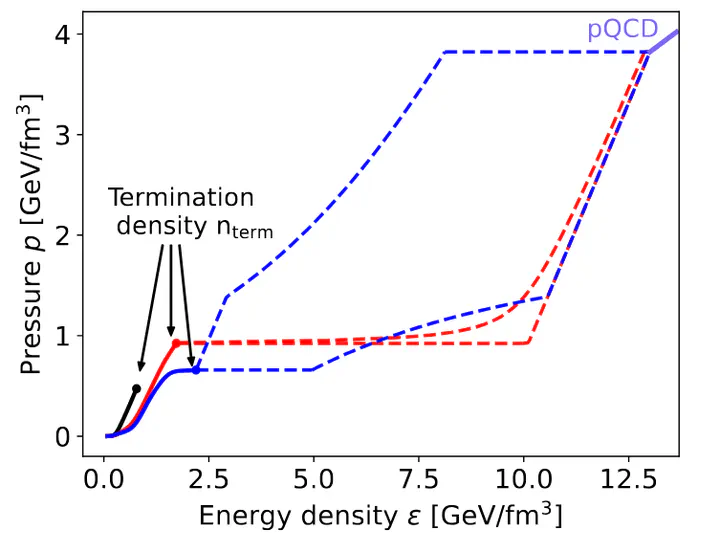Equation of state at neutron-star densities and beyond from perturbative QCD
Dec 21, 2023·, ,,,·
1 min read
,,,·
1 min read
Oleg Komoltsev
Rahul Somasundaram
Tyler Gorda
Aleksi Kurkela
Jérôme Margueron
Ingo Tews
 How extreme is your EOS extension?
How extreme is your EOS extension?Abstract
We explore the consequences of imposing robust thermodynamic constraints arising from perturbative quantum chromodynamics (QCD) when inferring the dense-matter equation-of-state (EOS). We find that the termination density, up to which the EOS modeling is performed in an inference setup, strongly affects the constraining power of the QCD input. This sensitivity in the constraining power arises from EOSs that have a specific form, with drastic softening immediately above the termination density followed by a strong stiffening. We also perform explicit modeling of the EOS down from perturbative-QCD densities to construct a new QCD likelihood function that incorporates additional perturbative-QCD calculations of the sound speed and is insensitive to the termination density, which we make publicly available.
Type
Publication
Phys.Rev.D 109 (2024) 9, 094030
We show that equations of state that are extremely stiff within the cores of maximally massive neutron stars are incompatible with the behavior of the speed of sound at high densities 25-40$n_\mathrm{sat}$. We also develop a method to marginalize over possible extensions of the neutron-star-matter equation of state, which we have made available as a public python script.